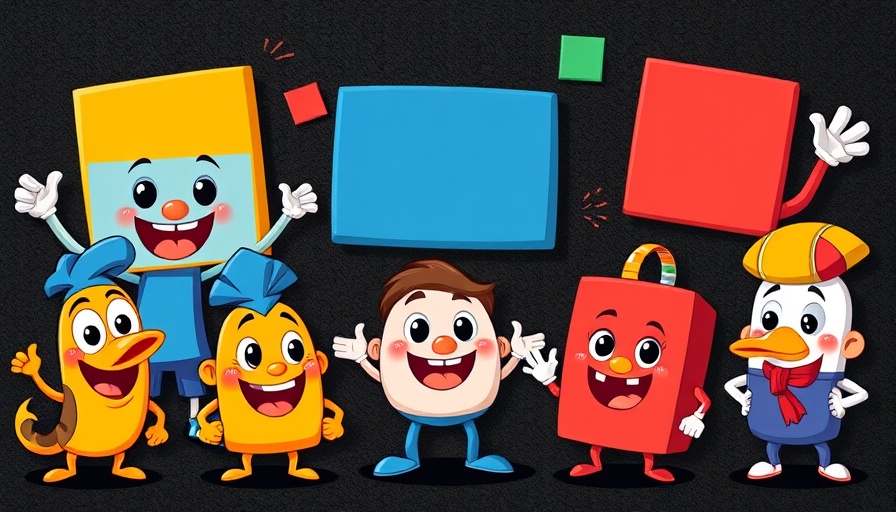
Why Every Brand Needs a Mascot in Today's Market
In the fast-paced world of marketing, the right strategy can make all the difference. Recently, companies across various sectors, from beauty to technology, have recognized the immense value of enlisting mascots to connect with their audience. The use of adorable and quirky characters is no longer reserved for sports teams and fast food chains; innovative businesses are adopting this trend to foster customer relationships and enhance brand recognition.
Glazy the Peach: A New Star in Brand Marketing
A case in point is OleHenriksen’s recent launch of Glazy the Peach, a charming character on Instagram designed to personify the brand. This creative approach highlights a fun storyline where Glazy experiences a skin crisis, turning her into a relatable figure. As she discovers the skincare line that helps her regain her glow, customers become part of her journey, creating an emotional connection that marketing teams are eager to cultivate. This method not only captures attention but also drives engagement around the product launch.
Lifting Brands with Mascots: Learning from the Big Players
Esteemed brands such as McDonald’s and Duolingo have successfully employed mascots for years, creating endearing figures that resonate with consumers. McDonald’s cast of characters, including Ronald McDonald and Grimace, has built an enduring legacy, emphasizing that once a mascot aligns with a brand's values, it can boost popularity and create a community around it. Duolingo's delightful owl mascot, Duo, has not only enhanced the learning experience but also transformed it into an enjoyable adventure, showing how effective mascots can be in modern marketing.
The Growing Trend of Mascots in Various Industries
With CeraVe’s creative introduction of Sarah V, a goat character celebrating the brand, it’s clear that the mascot trend is skyrocketing. The usage of mascots is crafting an emotional landscape for brands, leading consumers into a more engaging narrative. These quirky characters often go viral, creating organic reach that outstrips conventional advertising methods. It's a testament to how humor and personality in branding can generate dialogue and community around a product.
Transforming Customer Engagement Through Relatable Characters
In an age where connection is critical, mascots serve not just as marketing tools, but as storytellers. By embodying the brand's values, they initiate conversations and encourage customer loyalty. The lively narratives woven around these characters can prompt customers to share their experiences online, expanding the brand's reach.
Future Insights: What to Expect from Character Marketing
Looking ahead, the use of mascots in marketing is likely to evolve further. With advancements in AI technology and social media interactivity, we may see personalized mascots that respond to customer inquiries and concerns, giving brands an even more human touch. Companies should consider how these innovations can help them stay relevant in a competitive landscape.
Making a Decision: Why Your Brand Should Consider a Mascot
In a crowded marketplace, a unique and memorable mascot can differentiate your brand and enable deeper connections with your audience. Whether it's a serious mascot that conveys trust or a playful one that radiates fun, identifying the right character can significantly enhance your brand's strategy. With evidence showing how character marketing is generating substantial engagement and recall, brands are urged to evaluate this trend carefully.
The rising wave of mascots in marketing isn’t just a fad; it represents a shift in how companies approach their audience. By learning from successful examples and taking action now, your brand could tap into this dynamic form of customer connection.
To get started, consider assessing your current marketing strategy and determine if a mascot could enhance your brand narrative. With characters like Glazy the Peach leading the charge, engaging your customers in a fun, relatable way could be your ticket to competitive success.
 Add Row
Add Row  Add
Add 




Write A Comment